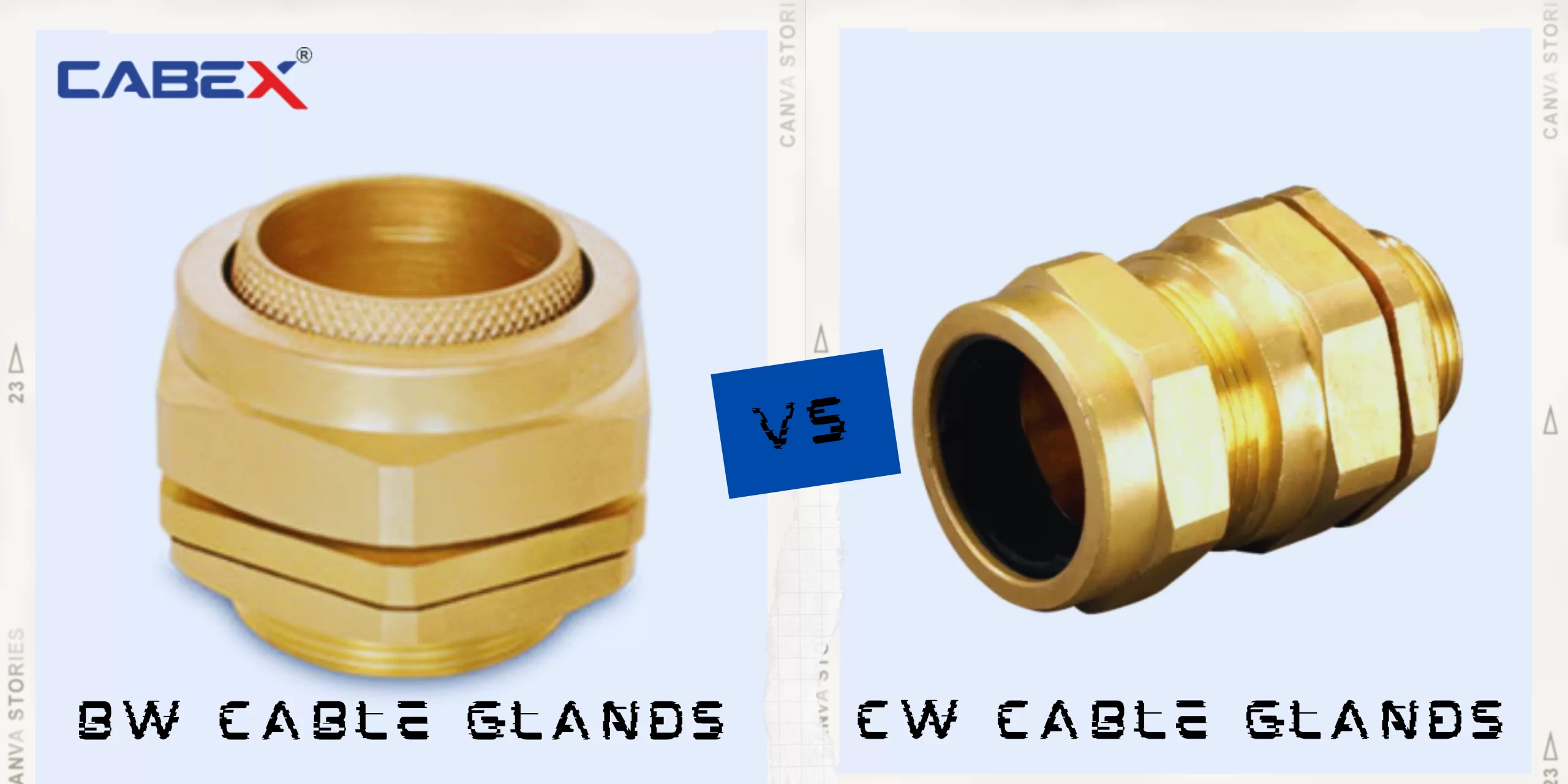When it comes to cable management, cable glands play a vital role in providing secure and safe connections between cables and equipment. Cable glands come in different types and sizes to suit various cable types and applications. Two of the most commonly used cable glands are BW and CW cable glands. In this article, we will discuss What Is the Difference Between Bw and Cw Cable Glands?
What are Cable Glands?
Before diving into the differences between BW and CW cable glands, let’s first define what cable glands are. A cable gland, also known as a cable connector or fitting, is a device that is used to secure and seal the end of a cable to a piece of equipment. Cable glands are designed to protect cables from damage caused by dust, water, and other environmental factors, as well as to prevent the escape of fluids or gases from the equipment. Cable glands are also used to provide strain relief, which prevents cables from being pulled out of the equipment accidentally.
What are BW Cable Glands?
These cable glands are a type of cable gland that is commonly used in industrial applications. BW cable glands are designed for use with steel wire armoured (SWA) cables, which are used to provide mechanical protection to the cables. BW cable glands feature a two-part construction, with a compression seal and a separate locking ring. The compression seal is designed to provide a watertight seal around the cable, while the locking ring secures the gland in place.
What are CW Cable Glands?
These cable glands are also commonly used in industrial applications. CW cable glands are designed for use with both unarmoured and armoured cables, making them a more versatile option than BW cable glands. CW cable glands feature a single-piece construction, with a compression seal and an integral armour lock. The compression seal provides a watertight seal around the cable, while the armour lock secures the cable in place.
What Is the Difference Between BW and CW Cable Glands?
The main difference between BW and CW cable glands lies in their construction. BW cable glands feature a two-part construction, while CW cable glands have a single-piece construction. Additionally, BW cable glands are designed for use with SWA cables, while CW cable glands are suitable for both unarmoured and armoured cables.
Another key difference between BW and CW cable glands is their sealing mechanism. BW cable glands use a compression seal and a separate locking ring, while CW cable glands use a compression seal and an integral armour lock. The separate locking ring in BW cable glands provides a more secure grip on the cable, making them a better option for applications that require high levels of vibration resistance. However, the single-piece construction of CW cable glands makes them faster and easier to install.
Are CW Glands Waterproof?
CW glands are designed to provide a high level of ingress protection against dust, moisture, and other environmental contaminants, but they are not completely waterproof. However, they do provide a high degree of protection against water ingress, especially when used in conjunction with suitable sealing materials and techniques.
It’s worth noting that the level of water resistance provided by CW glands can vary depending on the specific application and environmental conditions. For example, CW glands may be less effective in applications with high pressure water jets or prolonged submersion in water. In such cases, it may be necessary to use additional measures, such as waterproof enclosures or cable sheathing, to ensure adequate protection against water ingress.
Which Cable Gland is Right for Your Application?
When choosing between BW and CW cable glands, it’s essential to consider the type of cable you will be using and the application’s requirements. If you are using SWA cables, then BW cable glands are the obvious choice. However, if you are using unarmoured or armoured cables, then CW cable glands are a more versatile option. Additionally, if your application requires high levels of vibration resistance, then BW cable glands may be a better option due to their separate locking ring.
How Many Types of Cable Glands are There?
There are many different types of cable glands, each designed for specific applications and cable types. Some of the most common types of cable glands include:
- BW cable glands
- CW cable glands
- A2 cable glands
- E1W cable glands
- Marine cable glands
- Hazardous area cable glands
- Strain relief cable glands
- Non-armoured cable glands
- Armoured cable glands
- EMC cable glands
Each type of cable gland has its own unique features and benefits, and the choice of which one to use will depend on the specific requirements of the application.
Conclusion
In summary, both BW and CW cable glands are commonly used in industrial applications to provide secure and safe connections between cables and equipment. The main the Difference Between Bw and Cw Cable Glands lie in their construction and sealing mechanisms. BW cable glands feature a two-part construction and a separate locking ring, while CW cable glands have a single-piece construction and an integral armour lock.
When choosing between BW and CW cable glands, it’s essential to consider the type of cable you will be using and the application’s requirements to determine which type of cable gland is best suited for your needs. It’s also important to ensure that the cable gland you choose is compatible with the cable and equipment being used. By selecting the right cable gland for your application, you can ensure that your cables are properly protected and securely connected, which can help to prevent downtime and minimize the risk of damage or injury. Overall, whether you choose BW or CW cable glands, investing in high-quality cable management solutions is essential for ensuring the reliability and safety of your industrial equipment and systems.
Read also: How to Choose Cable Glands for Industrial Cables
Read also: Difference Between Cable Gland and Cable Termination






